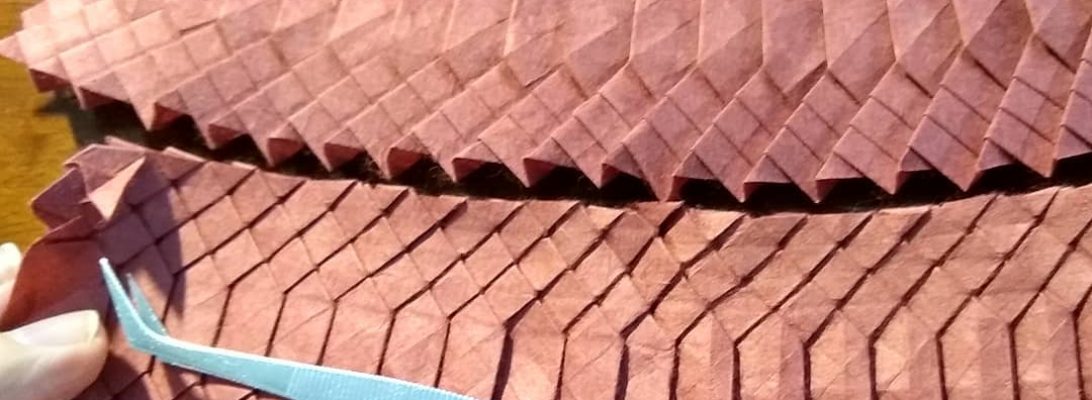Over the last couple of weeks I have been granted the privilege of test-folding the models from Xander Perrott’s new Kusudama book “Angular Elegance”:

I bought Xander’s first book “Folded Forms” – a treasure trove of delicate spikey balls. I offered my services as a test folder – to my delight and amazement he said yes.
Test folding is different to model folding, the brief is to see how easy to follow the diagrams are, how reproducible the forms are and what sense the written instructions make.
As all the models in this book are unit-based, I folded 3 or 4 of the modules (rather than the entire 30+) to check the 2 types of joins and how regular the construction methods can become. There is a wonderful mix and variety of spikey balls in this new (as yet unpublished) collection, and the skill levels to complete them range from fairly easy to nearly impossible – which is good, challenges abound for all levels of folder competence.

Xander commonly uses some funky paper ratios in his base-papers. Commonly 1:root(3), but this collection uses 2:root(3) and more exotically 6:5root(3). The paper ratio allows construction of accurate angles (many based of multiples of 60 degrees), and the book demonstrates nicely how to cut sheets of this ratio from more conventional sized paper.
Each kusudama has it’s own quirks, tricks and stress points, all require accuracy and nice paper (most showcase duo coloured paper in flamboyant and wondrous ways).
I have not folded a book “cover to cover” since I was a kid (who only owned a only couple of origami books) – it was an intense but hopefully useful journey as I made notes about the instruction set, unit folding and assembly process, subsequently passing this on to Xander for his consideration.
As I approach retirement age, I can see myself doing more in the meta origami world, having already established myself as an origami book editor and test folder – having time to do this without having to shoe-horn it inbetween school commitments is a luxury I am looking forward to.

